Editor’s Note: This post is written by a member of LTV’s sponsored content team, The Leisure Explorers. Do you own a Leisure Travel Van and enjoy writing? Learn more about joining the team.
Journeying full-time in our Leisure Travel Van began in 2022. We snapped this selfie on our first trip in “Voyager,” our beloved Wonder Rear Lounge. We purchased Voyager over the phone and booked a one-way flight to Sacramento, California, where she was located. When we arrived in Sacramento, we received a crash course in RV systems from a highly knowledgeable salesperson, and we were on our way! It was September 10 and the start of a completely new lifestyle. 
Firstly, I want to talk about living full-time in our LTV. Many think we are on vacation or continually camping and roughing it. That is not the case; we simply live in our current home of choice. We love the ability to park “Voyager” anywhere and live and explore. I often describe it to others as traveling with a five-star hotel room filled with our stuff.
Escape Versus Living
In our former stick-and-brick life, when we were raising our daughter, running a restaurant, and renovating apartment buildings, all while Jess worked full-time as an RN and nurse manager, we escaped to nature. We took multi-day backpacking trips into remote areas with nothing more than what we could carry on our backs. I wanted no connection to the outside world, only the peace and solitude naturally provided by wilderness locations. Together with my family, these trips re-energized us and strengthened our bonds with each other. Living full-time in our LTV is not an escape for us; it is the adventure of a lifetime.
We have worked hard to be able to travel and explore. To seek out experiences we would not be able to enjoy during a couple-day visit by airplane. We are trying to connect to others and the places we visit and embrace technology. Unlike the early years, when I only wanted to cook over an open campfire and be unreachable, today I want to live as if I never left my stick and brick behind with all the creature comforts of home. Watch live football, surrounded by nothing but stars, and zoom with our grandchildren any time we want, any place we are. Cook whatever meal we choose, however we wish to prepare it. Be warm or cool with no more nights freezing or sweltering in a tent. (Unless we want to!)
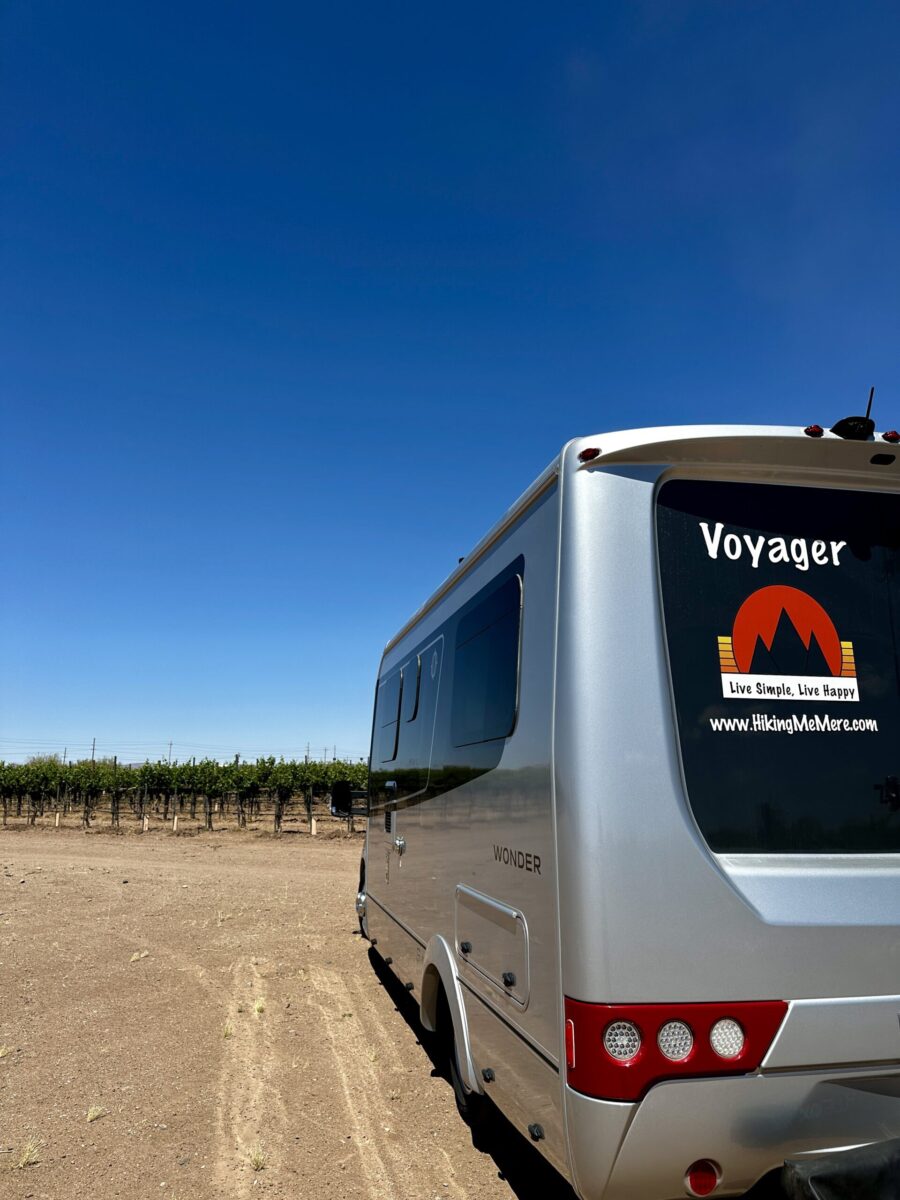
The Art of Travel
As we have learned, this balance of exploration and living is a fluid process in constant change. Our first achievement was learning how to travel; this took time and has evolved. Because we sold our home and jumped full-time into RVing, it was first necessary to establish a domicile state. We picked Nevada, specifically Las Vegas, for many vital reasons. Climate, location, and outdoor activities including hiking and biking, entertainment venues, professional sports teams, a major international airport, health care availability, and tax structure.
Our first few months were spent in our new home city to establish ourselves and put down some roots. Veterinarians, doctors, and dentists are setting up our mail service and learning about “Voyager” and her systems. “Voyager” is our first-ever RV, and learning to use the technology was our top priority. Being stationary in an RV Park was an interesting first step. As you can see, our first neighbors were very close, but instead of feeling closed in, I felt protected. Every day and everything about our life was new to us. How does the microwave/convection oven work? Where do I want to put my trash can? How do I dump our waste tanks? (There was a significant amount of apprehension the first time) The proximity of others provided the occasional informal conversation about our pups or the weather. It was exactly what we needed to feel comfortable and connected in our new full-time RV life.

Research
Jess has multiple degrees, including a Masters degree. I bought, grew, and sold a successful full-service restaurant. Together, we purchased the worst apartment buildings we could find, fully renovated, leased, and eventually sold them. Somehow, with our varied experiences, researching activities to do or places to stay proved difficult.
While we were stationary in Las Vegas, much of our focus was finding the places locals enjoyed. These places were not on Trip Adviser’s top ten list (although we do enjoy many of those activities, and it is a valuable resource). We tend to prefer activities and trails that are less frequented. This is not because they are less interesting or amazing. But, because they are harder to find, there are fewer tourists, and the people we meet are typically locals with a wealth of knowledge.
I apologize in advance if we ever meet in person; I will likely talk your ear off. Asking questions about your favorite local places and sharing some of our own. As time passed, we realized the best information was found when we put ourselves out there, meaning getting out on a trail or into a visitor’s center, even the local restaurant in a small town. These are the people with the gold, the local knowledge, which often someone living in an area does not even realize they possess. We rarely leave a hike without learning of another—a hike we probably would have never found if not for the assistance of locals we met along the way.
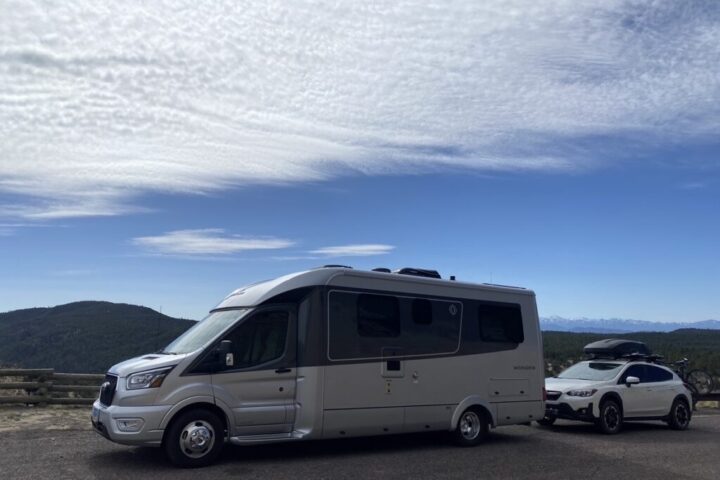
Our Favorite Apps
We have also learned how valuable apps and Facebook groups can be in our travels, both for inspiration and specific information. We use the free versions of all the apps except for Roadtrippers. I love the format of the Roadtrippers app, and it’s worth it for me to pay for the added features you receive with the paid version. There are infinite amounts of websites and apps available to discover information.
The key is finding what works for you and how you enjoy traveling. Most of the apps we used initially changed as we learned more about our style and needs when traveling. Initially, we traveled with a plan, a reserved site or a specific location, and particular activities pre-chosen. Unfortunately, this structure felt confining as we became better at discovering amazing places. We discovered how much we enjoyed the spontaneity of the unknown.
Today, our go-to apps are Roadtrippers for general planning, Alltrails, Komoot, MTB Project, and the Hiking Project for trail and biking route information. Watch Duty for fire safety and information—MyRadar, Weather, and Wunderground for current weather conditions and future forecasts. I also learned how valuable Google Earth is when selecting RV sights. Our Starlink likes a clear view of the Northern sky, which is easy to determine using this app. Of course, we additionally have gas apps, like Loves, which provide nationwide discounts. The National Park Service (NPS), National Forest Service, and Recreation.gov have apps with up-to-date information and reservation options. Looking through my phone now, I have downloaded at least twenty more travel-related apps over the years. However, the ones mentioned above are the ones I use the most frequently.

Facebook Groups
I realize I date myself by talking about Facebook and Facebook groups. However, we have found them to be a valuable tool in our travel toolbox. Groups like the Leisure Travel Vans Enthusiasts provide easy access to many others with questions and answers similar to our own. When traveling through the Midwest, we recently found one of our most valuable groups, the Tornado Warning Network. In addition to posting real-time warnings, the page posts predicted future severe weather outbreaks. It has saved us and helped us determine a safer route of travel. It is still up to us to interpret and act on the information using all available resources, but we have found it an essential piece of the puzzle.
We are members of over forty Facebook groups, from hiking groups, Leisure Travel Van specific groups, State and National Park Camping groups, COE Campgrounds, Boondocking & Free Camping USA, as well as specific groups of interest to us such as RVW (A women’s RVing Group), or a local group from places we spend time like Las Vegas Anything Local, or AZ Hiking Group #hiker AZ. This is a passive way to access huge amounts of information when I want. The real value of these groups is not the posts on my feed; it is the information I can search for within the groups. If you do not know how to search for information in a Facebook group, ask someone to show you how, and I will attempt to explain the basics.

Searching for Information
I am not a technology guru, but I try to stay current and learn new things. Searching for information on Facebook group pages was one of the first things I learned when we began our full-time LTV journey. Instead of posing a question to the group, which may have been asked numerous times, I was able first to search the group using the search feature.
Touch the icon, which looks like a magnifying glass at the top right of the group’s home page, next to the three small dots. This will bring you to another screen where you type in keywords, such as storage ideas, press enter, and see what happens. If you change your keywords, you will see different information. Now, imagine using this process when looking for specific campground or trail information. There is an enormous amount of knowledge available.
I have also learned to use apps in different ways. Many people use Alltrails to read trail descriptions and current conditions. However, few use the vast amount of information contained within the app. When people leave a trail review, it is possible to see any other hikes they have reviewed simply by touching their profile picture. This is where I look for trails when picking our first hikes in an area. I can see the types of trails the hiker has completed and their reviews. This helps me determine our hiking ability versus theirs.

Ladder Canyon and Painted Canyon Trail
I first discovered this part of the app while in Desert Center, California. We were stationary at an RV Park, primarily exploring Joshua Tree National Park. We had difficulty finding appropriate level hikes and hikes that were more than just hiking several miles through a wash. I hit the profile picture of a reviewer, and voila, I could see other hikes they had taken. Most of the hikes were local. I now had an entire list of hikes to pick from, which I would never have known the names of. The two pictures above were snapped during those hikes.
Ladder Canyon and Painted Canyon Trail were the coolest slot canyon trails we have hiked. It had multiple ladders, a sketchy drive through loose sand to the trailhead, and incredible views into the Salton Sea Valley. The other photo is Jess overlooking the folded earth of the San Andreas Fault, which we hiked through. The trail leads through several slot canyons and climbs the ridge. It was a maze of epic proportions; the trail was easy to follow; however, it was our first experience like this and, therefore, a bit unnerving.

Planning
Planning is necessary. However, we have learned that the right amount of planning for one person may be too little or too much for another. It’s like everything in life; each person’s or couple’s experiences determine their choices and comfort levels. Initially, we felt uncomfortable without a specific plan, but as our experience and confidence grew, so did our frustration with deadlines and fixed schedules. For instance, as unanticipated adventures presented, we could not pivot without losing event or reservation money.
Throughout our beginning travels, we were forced to skip a location we found intriguing or book another campground along our new route at an additional cost and forfeit what we had already spent on reservations. It felt frustrating and wasteful. With so much information available, it isn’t easy to zero in on a few activities or camping options. Imagine planning a family vacation and finding activities each family member will enjoy to fill every day of your life! It is an unbelievable amount of work, not a complaint but a reality.
We have developed our favorite style over time—a general direction of travel, typically with specific destinations in mind but no definitive schedule. Finding an overnight stay in a campground is usually very easy. Especially when it’s not a Friday or Saturday night, Voyager is well-equipped to boondock if we cannot book a spot. An extended stay or a stay including a weekend can be a different story.
Short Term Versus Long Term
This is one of the sites where we spent more than a month. Long-term site rental has been more difficult for us to secure. We only spend a month in one location throughout the winter. Space in warm weather locations is in high demand throughout the winter, driving prices up and availability down. In this situation, we volunteered at a State Park, which was compensated by an RV spot.
Typically, our winter locations are picked a full year in advance. Our first year was the most difficult. It is much easier now that we are “in” (having stayed at these locations before). Long-term rental is significantly less expensive than short-term rental in most situations. Monthly rentals range in price but generally are between $600.00 and $1200.00, with the addition of electrical usage. A nightly rental usually includes electric usage and an extensive range of prices. Our lowest price of the year was in South Dakota, around $30 for a full-service site, and our highest was in Minnesota, around $70 for a similar site.
In addition to cost savings, a longer-term stay allows for more in-depth exploration. These monthly stays provide time to immerse ourselves in the local community. Many of our favorite places have been found because we slowed down and participated in community events. We experienced our first rodeo in Camp Verde, Arizona, participated in a Christmas kayaking event in Lake Havasu, and enjoyed countless local festivals and celebrations, farmers markets, artisans events, and parades nationwide.
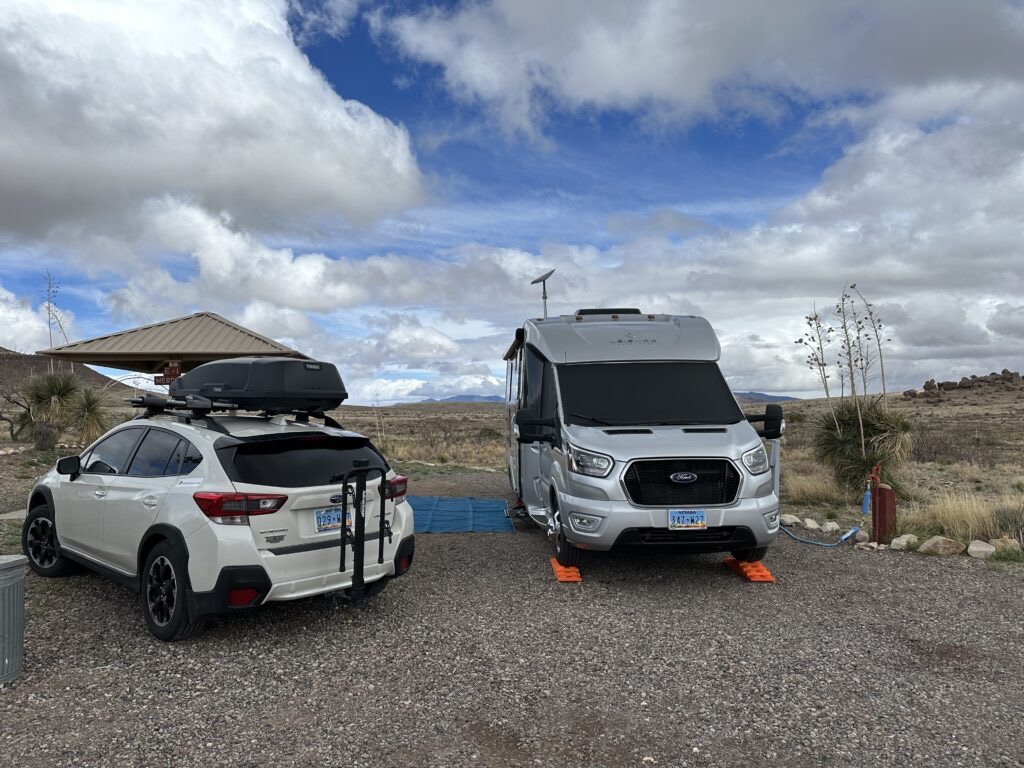
Flexibility
Living full-time in Voyager has demanded flexibility to protect ourselves and our home. Every part of our country has challenging weather situations. The weather was the challenge on this particular trip from our winter location in Nevada to our daughter’s home in Minnesota. As we traveled west to east, we gradually caught a slow-moving weather system crossing the country with severe thunderstorms producing tennis ball-sized hail and possible tornados. Our solution was simple: we stayed behind the storm and waited. We spent an extra night on the road boondocking at a travel center and lost some reservation money, but our family and home were safe.
Flexibility is change, and change can be scary to many. However, if you reset your thinking to the idea that flexibility can be an opportunity, the options are limitless. The key is to discover your comfort level and style of travel. For example, if we had little to no flexibility, we would never have discovered these incredible places below. We learned of these hidden gems with the help of locals. Because we had the time, our trip was enriched. It’s difficult to be disappointed when we do not have expectations.

Wet Beaver Creek, Arizona

Zapata Falls, Colorado

Carrizozo Lava Field, New Mexico
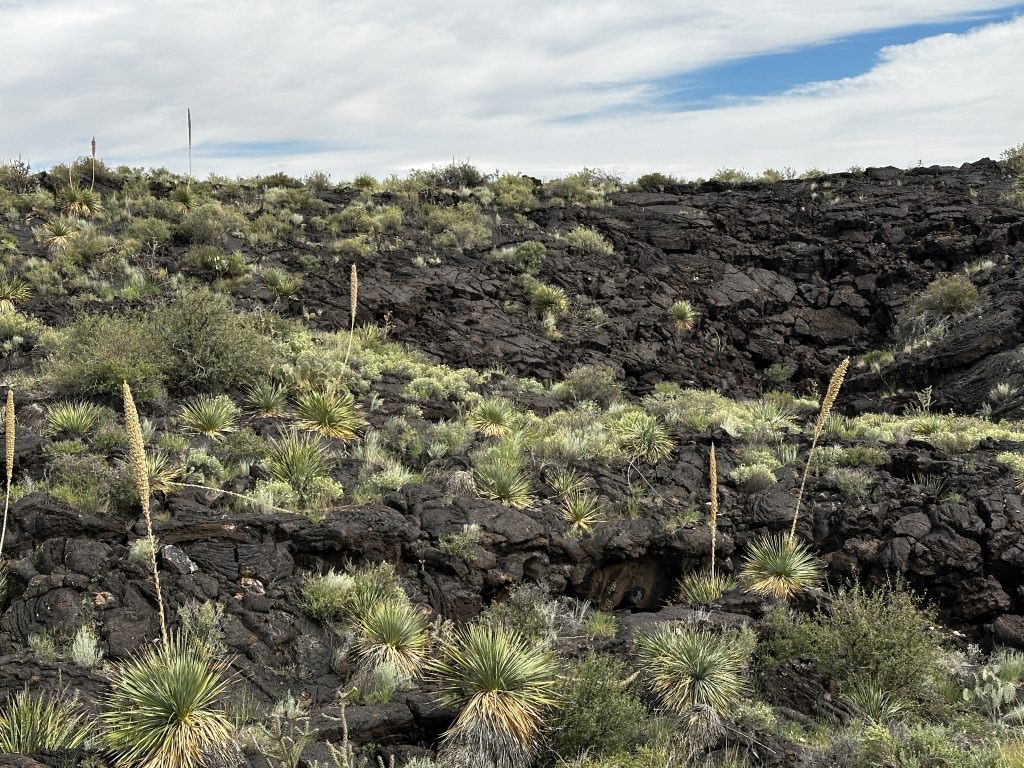
Pivoting
Suppose we had our heart set on a particular destination or activity. I would set my alarm and be on the computer to try to make a reservation with the masses. However, we would devise an alternative plan if it didn’t work out. Rex Hale is the campground in the picture below. It is located between Cody, Wyoming, and the east gate of Yellowstone National Park. We were late to the party and had no reservations in the park. We pivoted, found several first-come, first-serve campgrounds along this route, and decided to take our chances. Some sites had power, and some were primitive. Upon our arrival, all the sites with power were taken. However, there were many other excellent sites available. We picked our site, paid our fees, and proceeded to find the camp host and spoke with them. They reported that several RVs using the electric sites were approaching their fourteen-day stay limit and would leave soon. It worked out perfectly because we were flexible and adapted our plans to account for our housing situation. It was too hot to explore with the dogs, and running the air conditioning would be necessary if we wanted to leave them in the comfort of the LTV. It’s possible without an electric hook-up, but it’s not something we do. Instead, we opted to catch up on some chores, explore the campground, spend time in the river, and relax. Living full-time on the road is a 24-hour-a-day lifestyle. As soon as an electric site was available, we moved, paid our fees, and began exploring Yellowstone while the pups enjoyed the climate-controlled LTV. Additionally, we have a Starlink and a temperature monitoring system, allowing us to monitor the RV at all times.
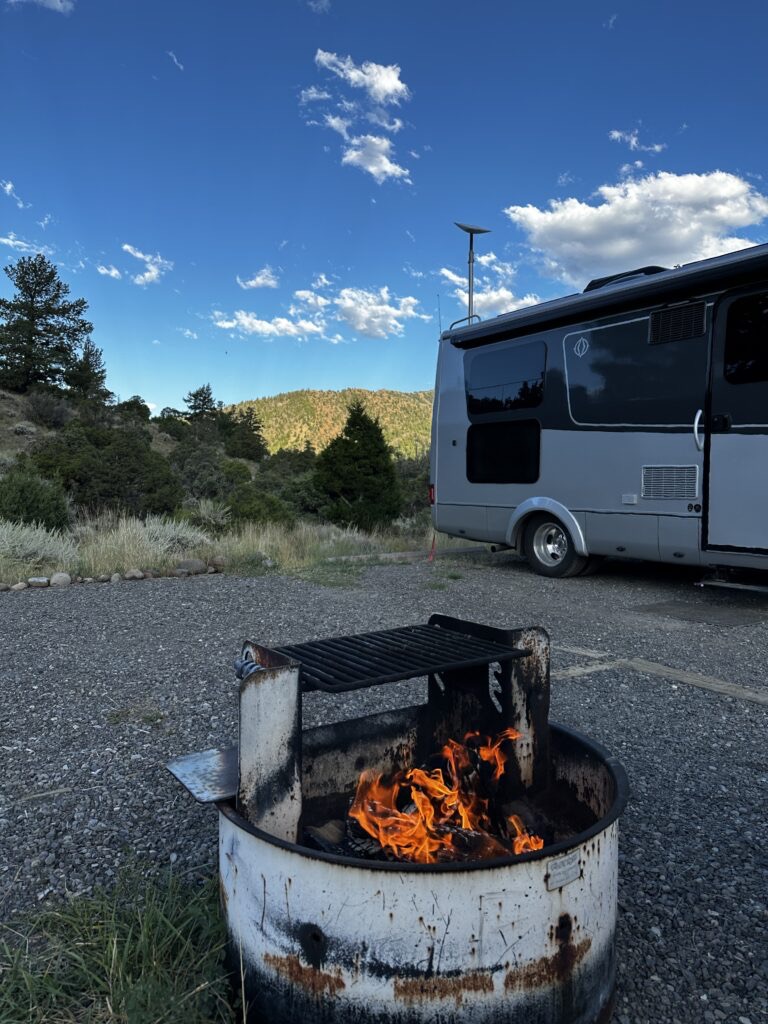
Balance
Our key is balance. Enough planning to be safe, account for weather situations, and not run out of gas! But enough flexibility to be spontaneous and explore an unexpected treasure or meet new friends for lunch. As we explored the Pacific Northwest this fall, we were contacted by an individual from one of our Facebook groups who invited us to a rally in the area, which would take place in a few weeks. We had no reservations pre-booked and quickly moved our timeline around. This unanticipated opportunity is what this full-time RV experience is about to us: exploration and connections. We spent a wonderful few days with people we would have never otherwise met, all because we allow for flexibility. We hope to meet up with this group in our future travels. Yes, that will be planned because events are time-sensitive. But balance is what it’s all about.
We have additionally learned sometimes we need a break. We should allow ourselves to feel okay just chilling and not writing, not exploring, just being. This can be a challenge for high-energy people like ourselves. Over the years, our life has been packed full, but our full-time RV adventure has slowed us down a bit. However, we still fill our days with activities and adventures we enjoy. A work in progress and still transitioning to whatever our future holds for us.
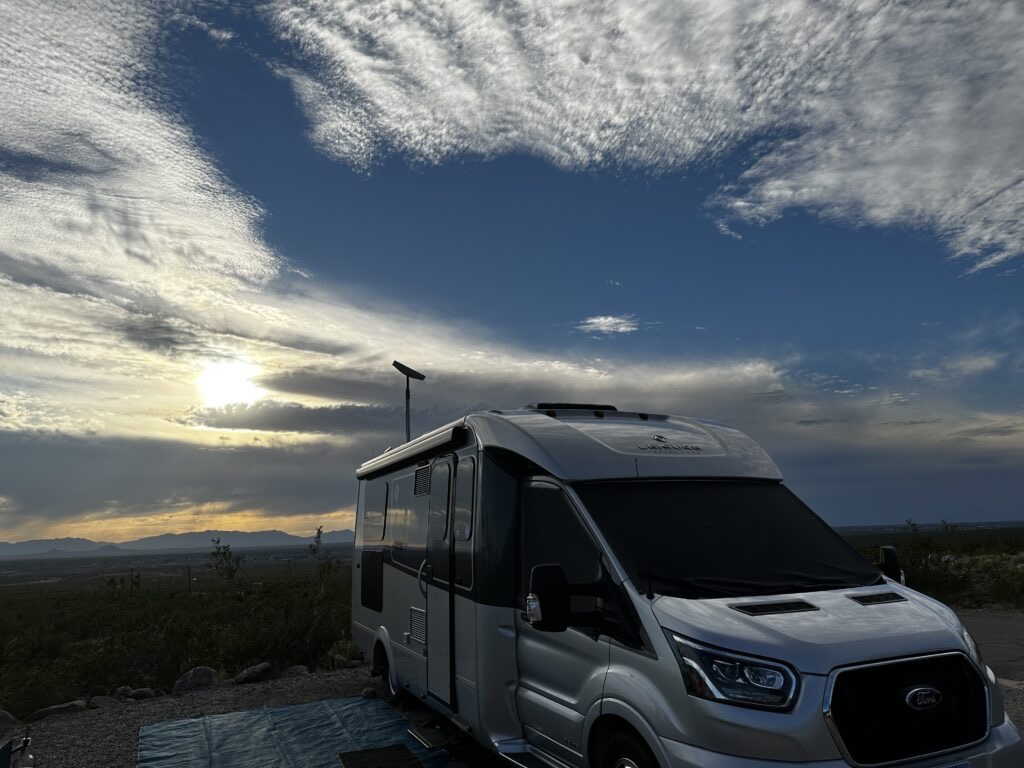
Adaptability
The ability to adapt to any situation has also enhanced our RV experience. Adaptability means being able to adjust to new situations. This is the essence of full-time RV travel. It is different from being flexible or pivoting. Adapting allows one to embrace whatever is present, possibly a less-than-ideal campground or ridiculous neighbors.
We travel like chameleons and adapt to wherever we are instead of trying to change things to fit our needs. We have learned to embrace even the worst RV site in the park, making it our own and finding the positives. Accepting and embracing circumstances, which are not always ideal, has changed our perspective. I am perpetually optimistic and look for the good in everything: a meal, a show, a location. Searching for the good and accepting the bad creates comfort and calmness.
“Embracing the suck” is a saying one typically hears in movies. If you try it in real life, you might be surprised by the benefits it allows you to experience. The most rewarding hikes of my life have been the most difficult and have provided the most satisfaction. Choosing to be happy in less-than-ideal situations and adapting is a similar feeling. Rain for weeks is not preferred when traveling, however it may be possible to see waterfalls which may not have existed or rivers where there is usually an arroyo. These rains may wash the dust off the desert pants, allowing their vibrant colors to shine. Moreover, rains can turn a monochromatic landscape into a lush pallet of flowers. Choosing to embrace circumstances and adapt to conditions provides us peace.
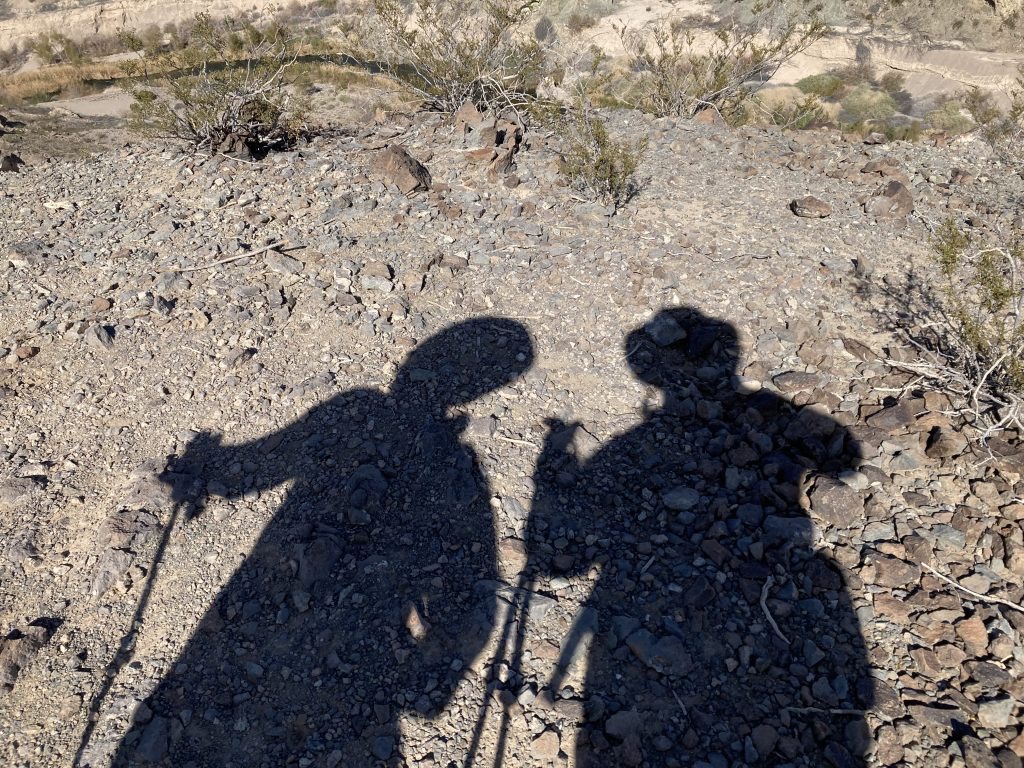
Chores
The chores of full-time RV life are the same as those of stick-and-brick life: groceries, laundry, cooking, cleaning, pet care, and general maintenance. One distinctive difference is that we are only somewhat stationary for about four months annually and travel the rest of the time. We are constantly searching for grocery stores, laundromats, oil change locations, hairdressers, and any other services we want or need. I’ve joked with our favorite hairdresser from our long-time home state of Maine “that we’re getting bad haircuts across the country one state at a time!” Of course, the statement is symbolic, but the concept is one you must embrace if you are considering full-time life on the road. The days of having the same person cut your hair, your favorite garage care for your beloved RV, or even the simple familiarity of a local server at your go-to restaurant are over.
Embracing the unknown and just living is the reality. Sometimes we do laundry at RV parks, sometimes it is when we change locations, and other times when we travel in our “toad” to a nearby town. We never know the best place that is clean, safe, and affordable; we just read some reviews and pick one. Often, we wish we had picked another, but we make it work. Then, we are on to the next destination.
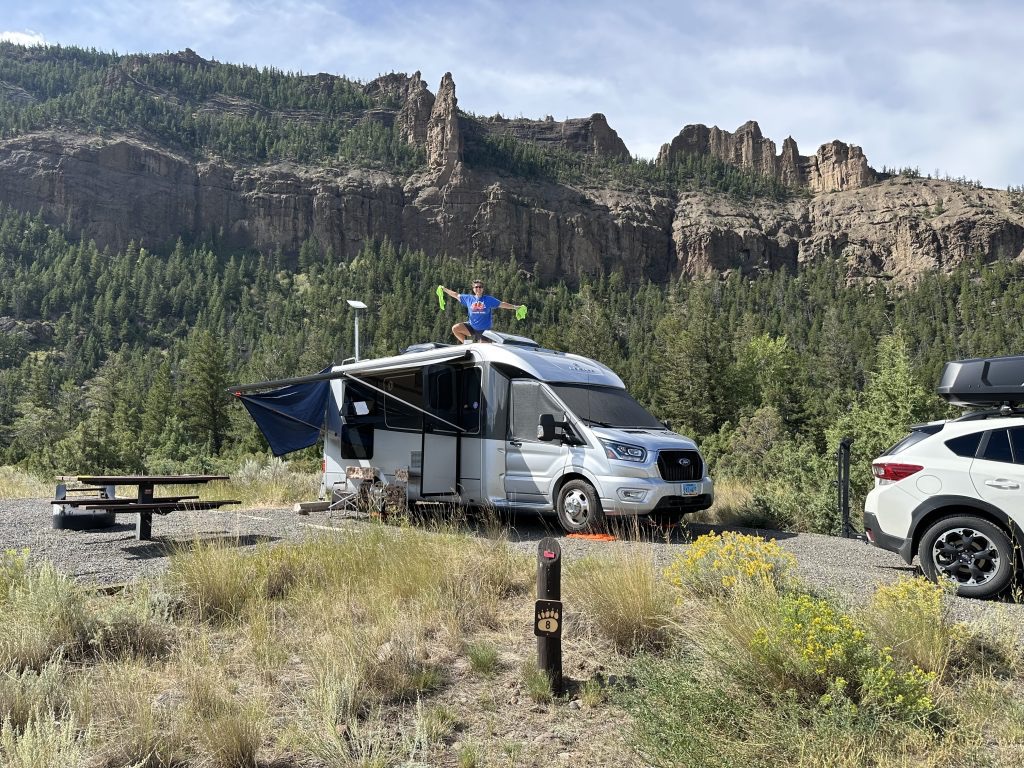
Rainbows and Yellow Brick Roads
Traveling full-time in a 25-foot RV is not all rainbows and yellow brick roads. There are many challenges and unanticipated situations—broken windows, hospital stays, extreme weather, all of which we have experienced this year. When confronted with life, we make choices and pivot when necessary. Flexibility, planning, pivoting, adapting, and balance are a few of the most important skills we have embraced in our “Art of Traveling.”
After more than two years of full-time travel, I have yet to tire of it and have never questioned our decision to choose this lifestyle. Suppose you travel full-time like us or are a weekend warrior. In that case, adding these ideas to your RV travel toolbox might help you enjoy your experience in whatever situations you encounter. Appreciating the little things, good or bad, is part of the overall experience and your unique travel story. We do not set expectations, allowing us to explore with “Wonder” and adding immensely to our happiness.
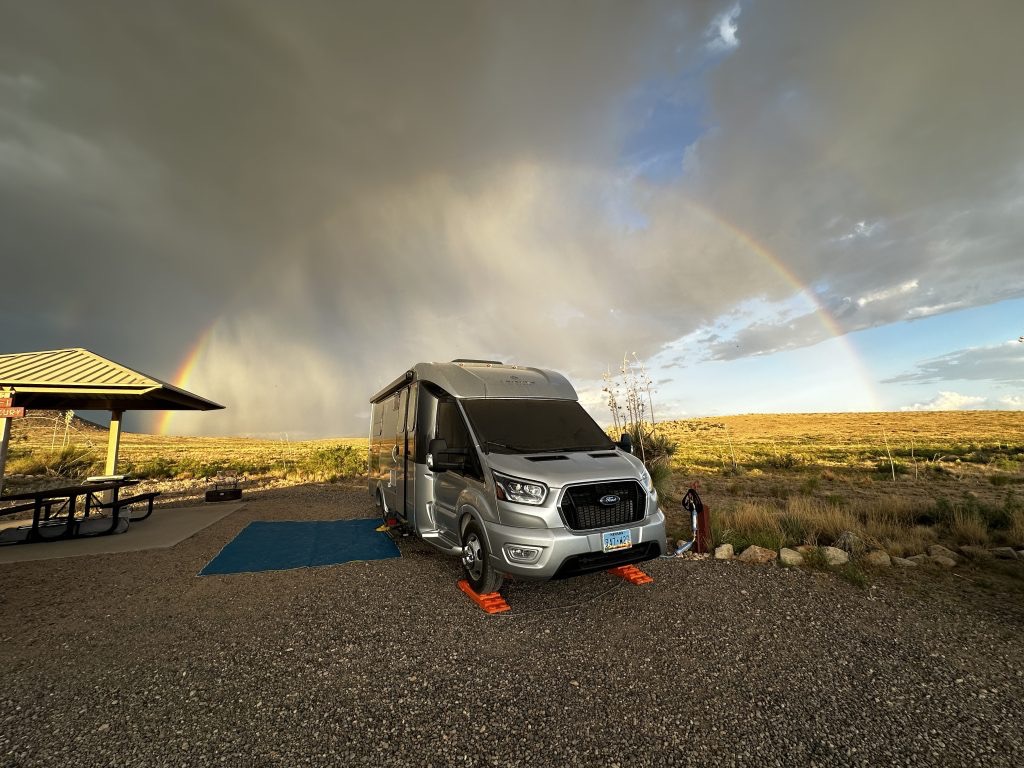
We love our Leisure Travel Van and the type of life and experiences we have had because of it. Jess and I are best friends and love spending time together. We support each other and work very well together. We split chores, research, planning, and driving. Using our combined knowledge and strengths, we try to squeeze everything out of every day we have together on the road. I hope these ideas help you get the most out of your RVing adventures. Live Simple Live Happy,
Editor’s Note: The views, recommendations and opinions expressed in this article are those of the author(s) and are not necessarily those of Leisure Travel Vans.


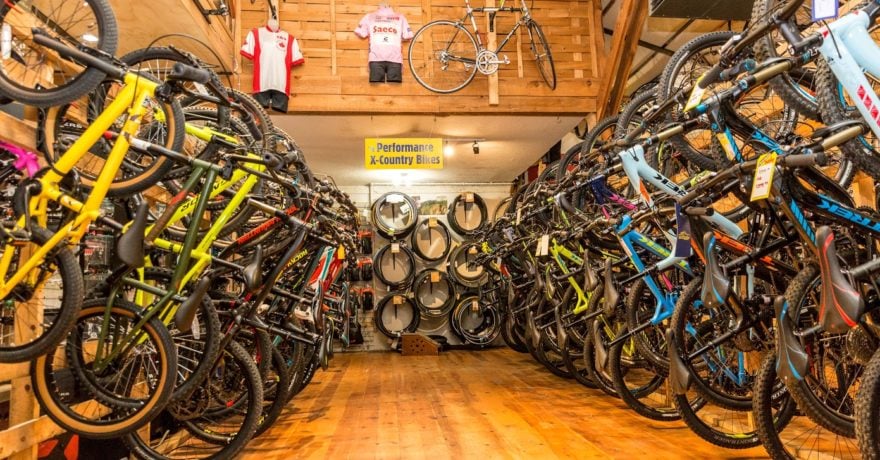
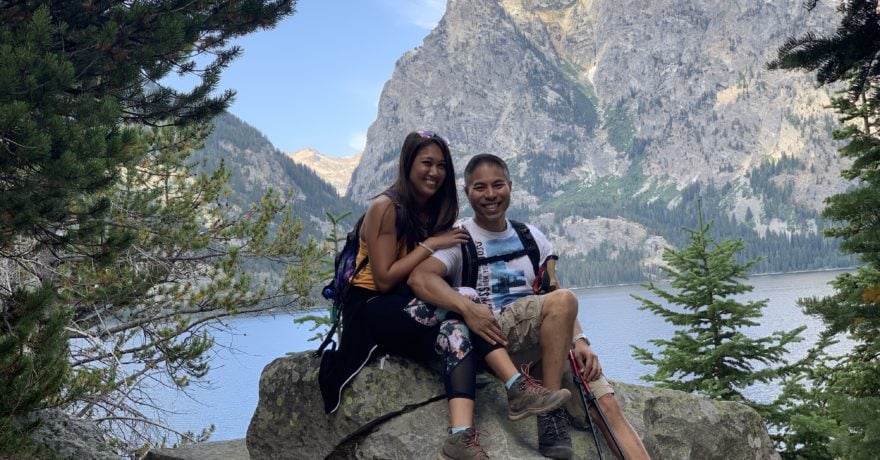
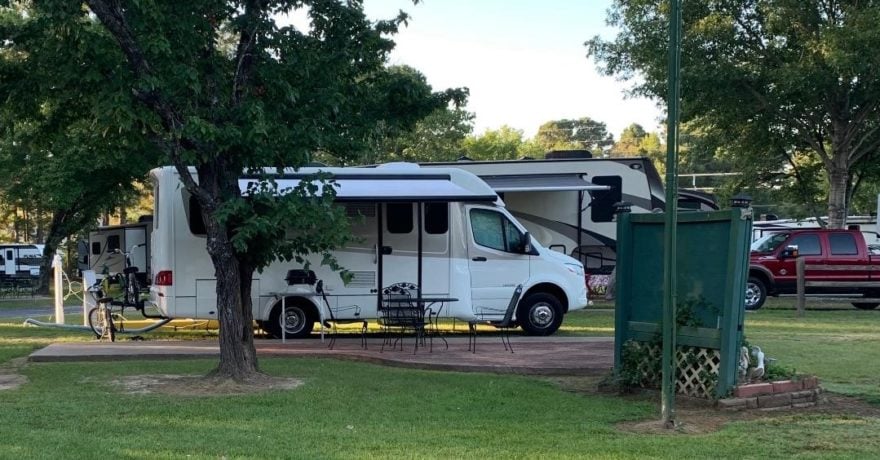
Comments